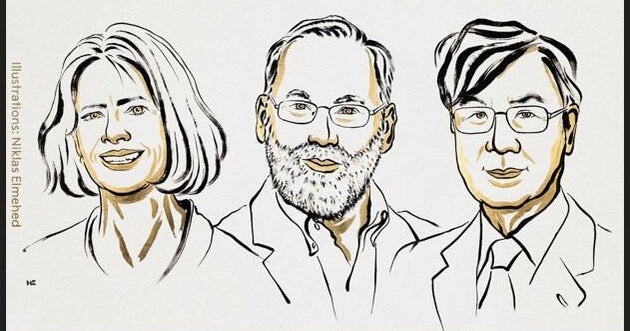
"The immune system has many overlapping systems to detect and fight bacteria, viruses and other bad actors. Key immune warriors such as T cells get trained on how to spot bad actors. If some instead go awry in a way that might trigger autoimmune diseases, they're supposed to be eliminated in the thymus - a process called central tolerance. The Nobel winners unraveled an additional way the body keeps the system in check."
"The Nobel Committee said it started with Sakaguchi's discovery in 1995 of a previously unknown T cell subtype now known as regulatory T cells or T-regs. Then in 2001, Brunkow and Ramsdell discovered a culprit mutation in a gene named Foxp3, a gene that also plays a role in a rare human autoimmune disease. The Nobel Committee said two years later, Sakaguchi linked the discoveries to show that the Foxp3 gene controls the developmen"
Mary E. Brunkow, Fred Ramsdell and Dr. Shimon Sakaguchi received the Nobel Prize in medicine for discoveries concerning peripheral immune tolerance. The immune system uses multiple overlapping mechanisms to detect and eliminate pathogens, and T cells are trained to recognize harmful agents. Central tolerance eliminates misdirected T cells in the thymus, while regulatory T cells provide an additional peripheral mechanism to suppress autoimmune responses. Sakaguchi discovered regulatory T cells in 1995. In 2001 Brunkow and Ramsdell identified a mutation in the Foxp3 gene implicated in a rare human autoimmune disease, and Sakaguchi later linked Foxp3 to regulatory T cell development.
Read at Cbsnews
Unable to calculate read time
Collection
[
|
...
]